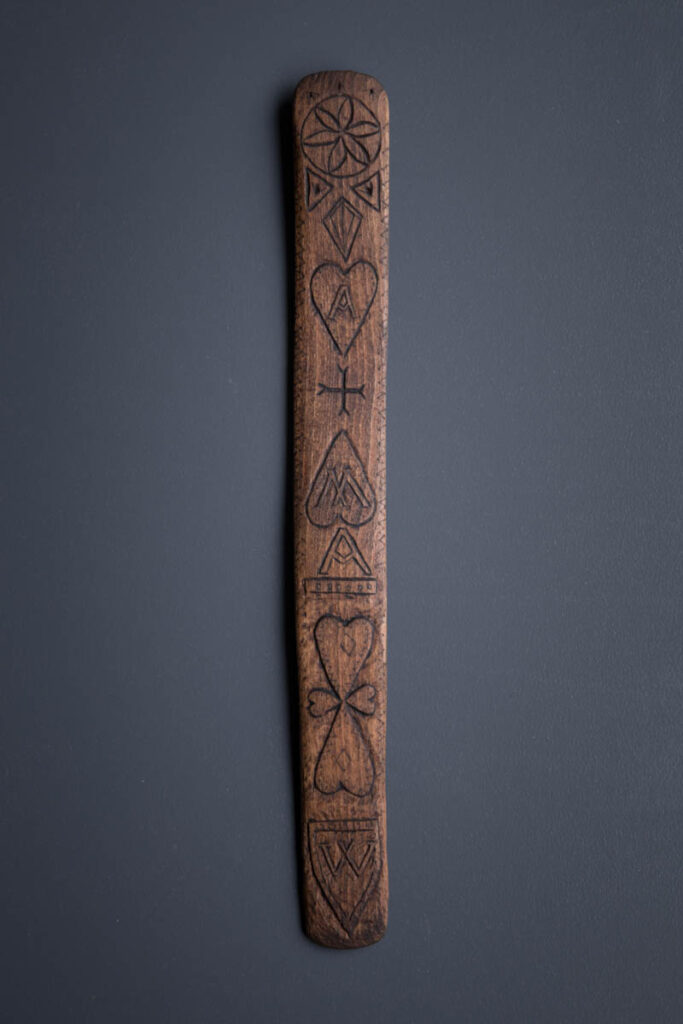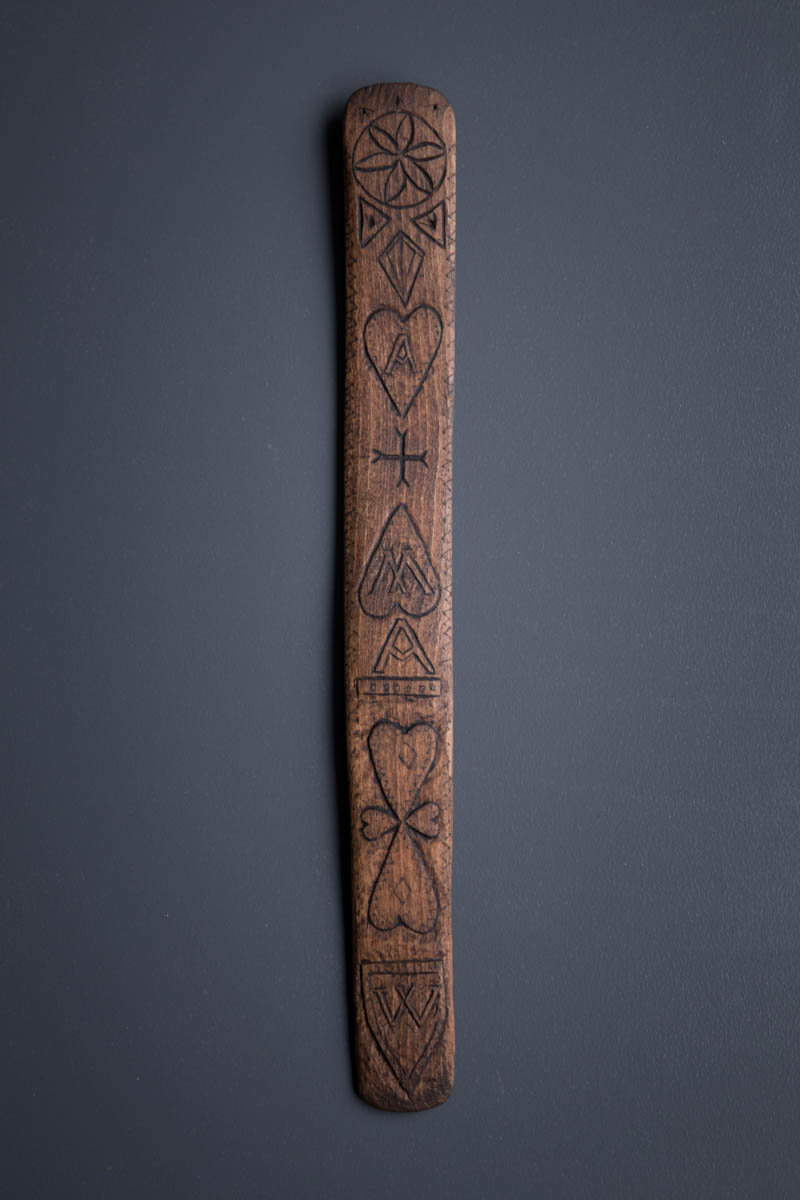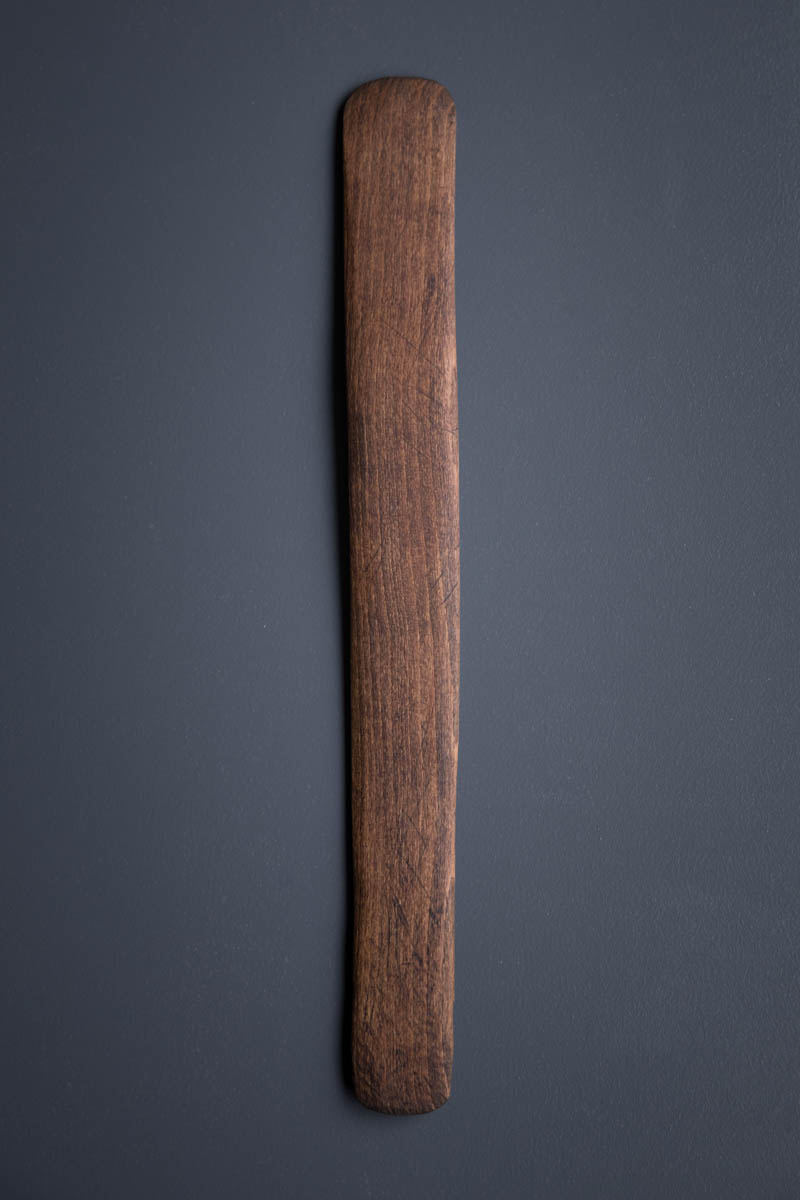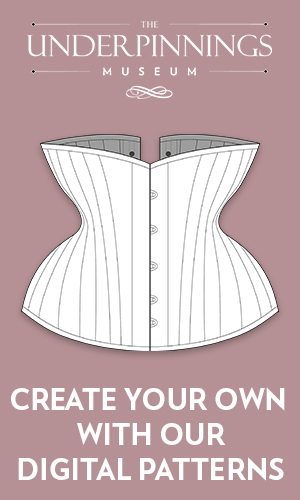Date: c. late 18th century to early 19th century
Origin: Great Britain
Fabric: Wood
Brand: Custom made
Early busks were often made of wood, bone or baleen and would be inserted into the centre of stays or corsets to help support the garment and shape the body. Busks could be plain and utilitarian, or elaborately carved and painted, with the latter occasionally exchanged as a love token.
The carved design on this wooden busk suggests that it may well have been given as a love token, with heart motifs and encasing initials (presumably referring to the names of the ‘sweethearts’). The busk is lightly curved rather than completely flat, likely for greater comfort when worn with the curvature placed over the abdomen.
From the collection of Karolina Laskowska




